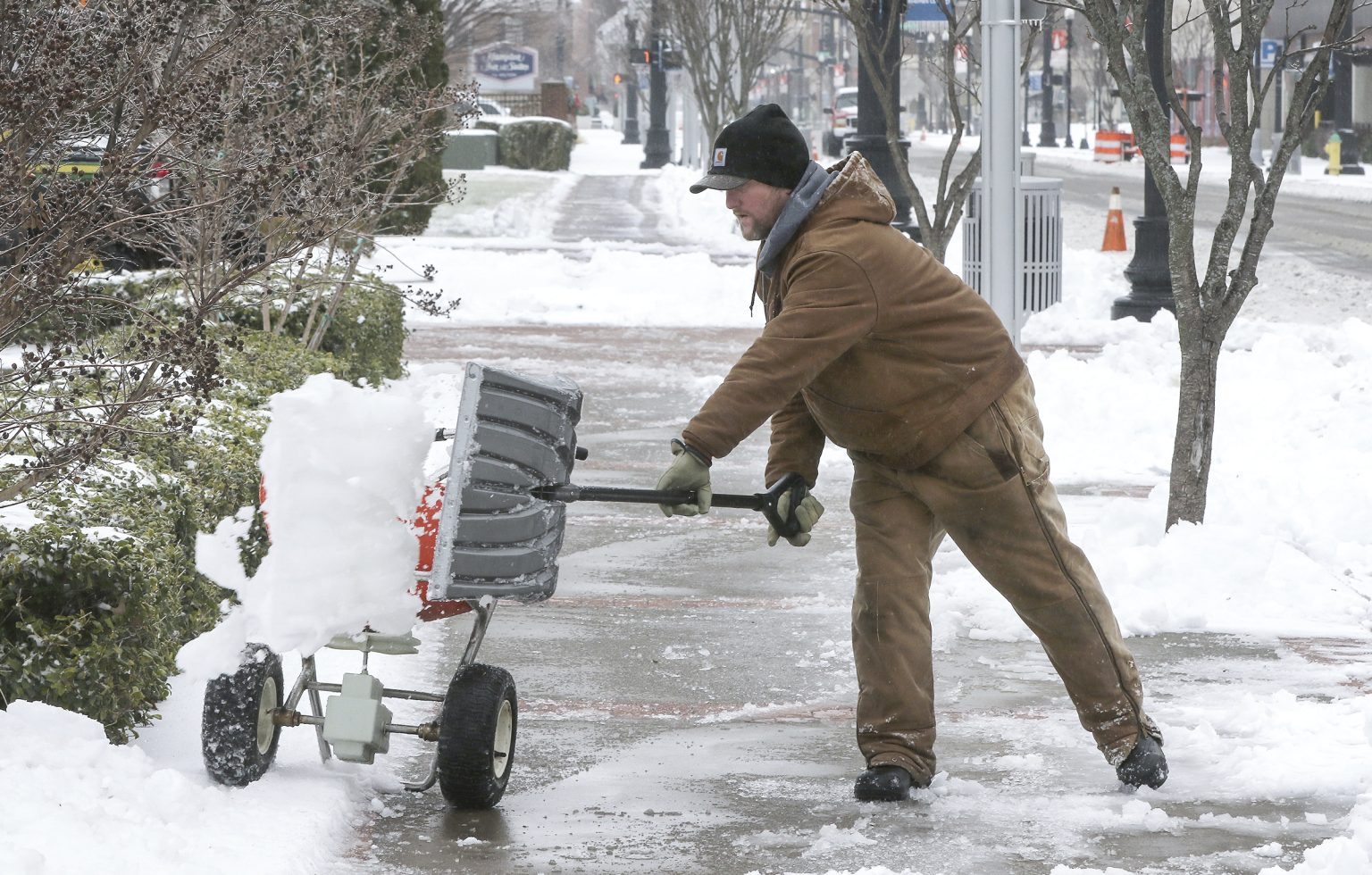Winter Storm Blair, a significant weather system, swept across a large swathe of the United States, impacting approximately 60 million Americans with freezing temperatures and heavy snowfall. The storm, which began on Friday in the Midwest, tracked eastward over the weekend, blanketing roads with snow and ice, and finally reached the East Coast on Monday, coinciding with President-elect Donald Trump’s scheduled meeting with Congress in Washington D.C. The widespread impact of the storm resulted in numerous school closures, travel disruptions, and states of emergency declared across multiple states.
The Midwest bore the brunt of the storm’s initial impact. Kansas witnessed blizzard-like conditions, forcing the closure of major highways, including Interstate 70. Snow accumulations ranged from 4 to 11 inches, prompting school closures in several counties, including Shawnee, Sedgwick, and Douglas. Similarly, western Nebraska and parts of Indiana experienced heavy snow and ice accumulation, leading to hazardous road conditions. Indiana activated its National Guard to assist stranded motorists, with central Indiana expecting at least six inches of snow and southern Indiana anticipating around four inches. School closures were widespread across Indiana, with Indianapolis Public Schools and Perry Township Schools opting for remote learning. However, some school closures in Evansville, Mount Vernon, Henderson, and Webster Counties were pre-planned staff development days and not directly related to the storm.
Missouri also grappled with heavy snowfall and blizzard conditions, resulting in widespread school closures. The National Weather Service predicted significant snowfall, particularly north of Interstate 70, with some areas expected to receive up to 14 inches. Jackson and Vinton Counties declared Level 3 Snow Emergencies due to dangerous road conditions, leading to school closures. Boone County and St. Louis County also closed schools on Monday due to the inclement weather. The storm’s eastward progression brought significant snowfall to Kentucky, where Louisville recorded over seven inches. Governor Andy Beshear declared a state of emergency, and numerous school districts canceled classes, including Jefferson County Public Schools, impacting nearly 100,000 students. Several other counties, including Oldham, Bullitt, Shelby, Spencer, Greater Clark, and Fayette, also closed schools due to the weather.
West Virginia braced for the storm’s impact, with Governor Jim Justice declaring a state of emergency for all 55 counties. Widespread school closures were implemented across the state, affecting counties such as Cabell, Jackson, Kanawha, Logan, Mingo, Nicholas, and Wayne. Similarly, Virginia Governor Glenn Youngkin declared a state of emergency, and numerous school districts proactively canceled classes on Monday. Affected counties included Amelia, Charles City, Chesterfield, Dinwiddie, Goochland, Hanover, Henrico, Powhatan, Prince George, New Kent, Northumberland, and Richmond. Some counties, including Albemarle, Charlottesville, Harrisonburg, Lancaster, and Mecklenburg, had already scheduled teacher training days, meaning classes were not in session regardless of the storm.
Maryland anticipated heavy snowfall, with Garrett County expecting up to 10 inches. Governor Wes Moore declared a state of emergency, warning of the storm’s impact from Sunday to Tuesday. Several school districts, including Baltimore City, Cecil County, Harford County, Carroll County, Anne Arundel County, and Howard County, closed schools due to the weather. Finally, Washington D.C. also prepared for heavy snow and frigid temperatures as the storm coincided with President-elect Trump’s scheduled meeting with Congress. Despite the weather, House Speaker Mike Johnson affirmed that Congress would continue its duties. All public schools throughout the district were closed.
The widespread impact of Winter Storm Blair underscored the importance of preparedness and caution. Authorities throughout the affected regions urged residents to stay off the roads, monitor local news for updates, and heed official school district communications regarding closures and changing weather conditions. The storm served as a reminder of the disruptive power of winter weather and the need for proactive measures to ensure public safety.

